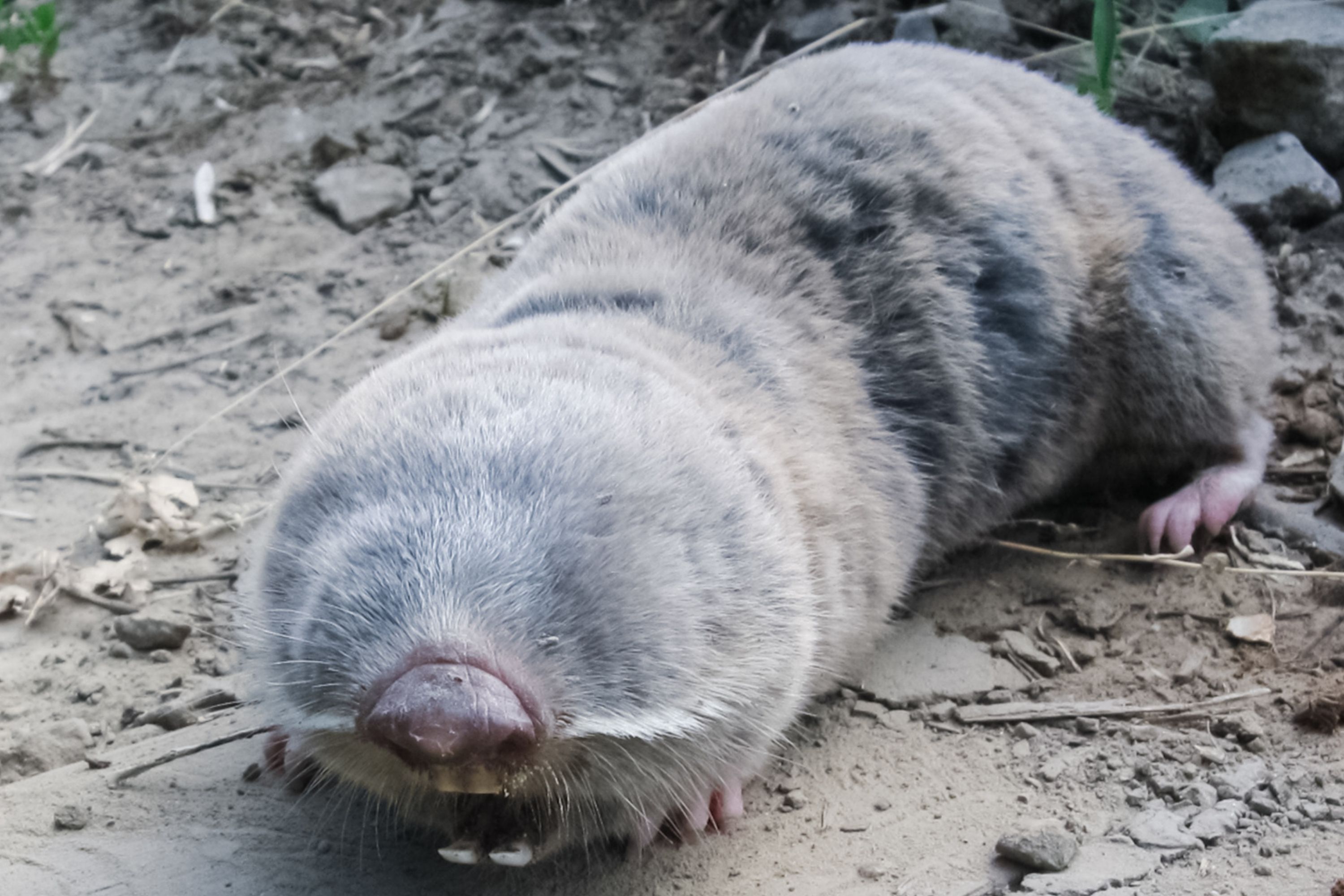Middle East blind mole-rat
(Spalax ehrenbergi)

Description
The Middle East blind mole-rat or Palestine mole-rat (Nannospalax ehrenbergi) is a species of rodent in the family Spalacidae. It was formerly classified in the genus Spalax, but more recent phylogenetic evidence supports it and two other species belonging to the genus Nannospalax. Of the three Nannospalax species, N. ehrenbergi is the only one to also belong to the subgenus Nannospalax (unless the potential species within N. ehrenbergi are also considered their own species). The Middle East blind mole-rat weighs 100-200 grams (3.5-7.1 oz). It has light gray fur and four sharp teeth, two large teeth in the upper jaw and two smaller teeth in the lower jaw. It has a life span of up to 20 years and is notable for its adaptability to severe lack of oxygen. In Israel, the blind mole-rat is a major agricultural pest. It digs long tunnels up to 80 centimeters deep and stores onions and tubers in underground chambers. The exceptional ecological adaptation strategies of the blind mole-rats can be seen in their different tongue morphologies, as evidenced by their tongue papillae. The tongue papillae differ between individuals in a species to adapt to different environmental regions with variant soil characteristics and food types. N. ehrenbergi is found in Egypt, Iraq, Turkey and the Levant (Israel, Syria, Palestine, Jordan and Lebanon). The natural habitat of the mole is Mediterranean-type shrubbish vegetation, and it is threatened by habitat loss. According to Israeli researchers at Haifa University, the Middle East blind mole-rat is an important lab animal for researching cancer due to its apparent resistance to the disease. In a 2013 study, data on N. ehrenbergi resistance to cancer was documented: -No spontaneous tumors have ever been noticed in blind mole rat, based on observing thousands of individuals along half a century. -Inducing cancer with chemical carcinogens that lead to 100% of the expected tumors in mice and rats after 2–6 months, respectively, indicate an extraordinary cancer resistance of Spalax: Only 2 out of 12 animals, and old ones (>10 years old; Spalax can live ~>20 years; 5 times longer than its evolutionary relative, the rat) developed the expected tumor with one of the carcinogens and only after 18 and 30 months.
Taxonomic tree:







